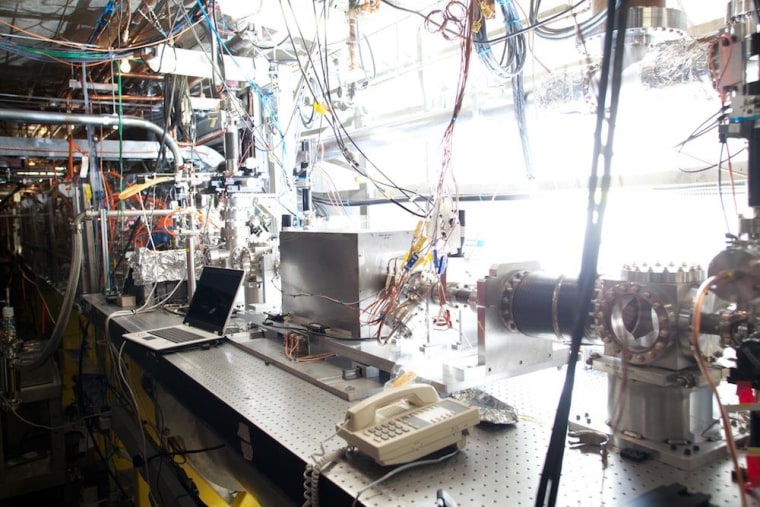Move over, Large Hadron Collider. A new atom smasher could one day slam particles into each other at even more mind-bogglingly high-energy levels than the massive underground ring near Geneva.
The new system, called a Wakefield accelerator, could allow scientists to make tiny but powerful particle colliders that could fit on any university campus. That, in turn, could make it feasible to look for as-yet-unknown subatomic particles lurking in the universe.
The new accelerator was described Wednesday in the journal Nature.
The premise behind all particle colliders is deceptively simple: Take a bunch of subatomic particles such as protons or electrons, make them crash into one another at incredibly high speeds, and then look at the wreckage to see what comes out, said study co-author Mark Hogan, a physicist at the Stanford Linear Accelerator, or SLAC National Accelerator Laboratory in Menlo Park, California. [Images: Inside the World's Top Physics Labs]

But accelerating protons or electrons to near the speed of light is no simple feat. It has taken ever-bigger colliders to produce the powerful particle beams required to probe the frontiers of high-energy physics. "We've reached a limit on what we can realistically afford to build in terms of size and cost," Hogan told LiveScience.
To get around that limit, Hogan and his colleagues tried boosting collider energies without dramatically scaling up in power and size. They created a plasma of hot lithium gas — essentially a soup of atoms with electrons stripped off — in an 11.8-inch-long (30-centimeter-long) chamber.
The team then shot two bursts of tightly focused electrons traveling at near the speed of light into the plasma, said study co-author Michael Litos, who is also a physicist at the SLAC National Accelerator Laboratory.
Because particles of like charge repel each other, the first bunch of electrons pushed the electrons in the plasma out of the way, while the bigger lithium ions stayed in place. These lithium ions then pulled the plasma electrons back into place, creating a bubble like the "wake around a boat," Hogan said. The movement of electrons generated a huge electric field inside the wake.
The second bunch of electrons trailed the first by just a hair's breadth, essentially surfing on the wake of the first pack. By positioning the two bunches of electrons just right, the energy put into the plasma by the first bunch of electrons was efficiently sucked out the plasma's electric field by the second group of electrons, Litos said.
In the future, multiple bunches of electrons could be shot through a plasma field, with each bunch transferring energy to the electrons behind it. That strategy could pave the way for arbitrarily powerful colliders that would fit in the basement of any hospital or university, Hogan said.
The method could also be used to supercharge conventional colliders.
— Tia Ghose, LiveScience
This is a condensed version of a report from LiveScience. Read the full report. Follow Tia Ghose on Twitter and Google+. Follow LiveScience on Twitter, Facebook and Google+.